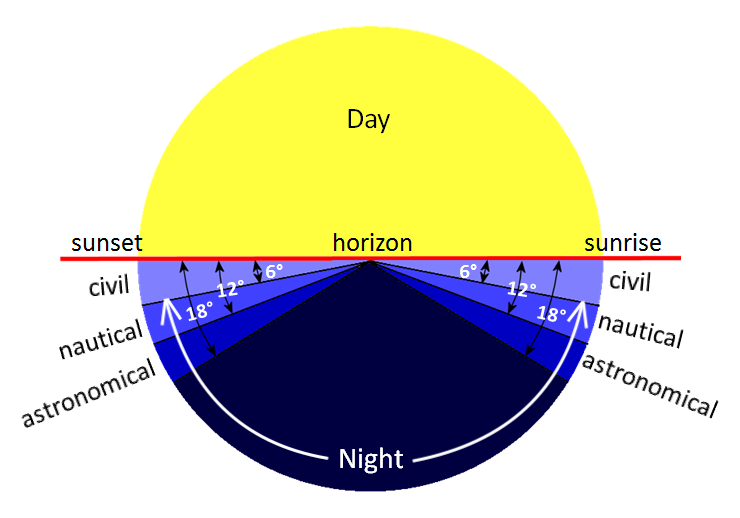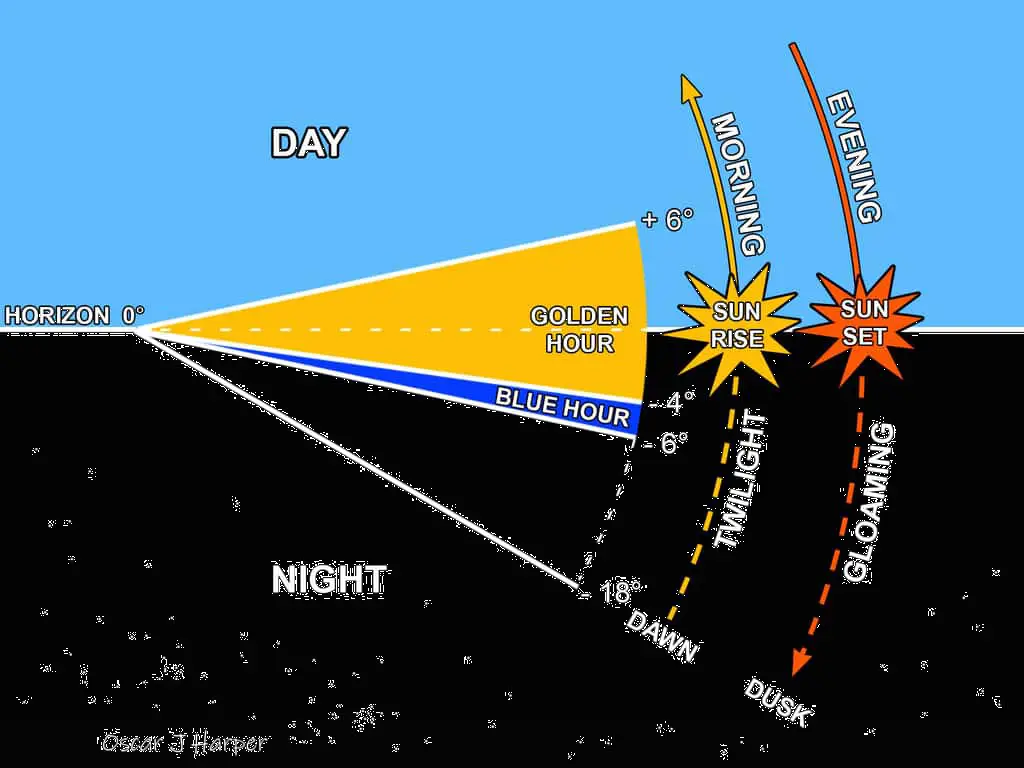Sunrise and Sunset
Sources: TimeandDate.Com and PetaPixel and SunsetSunriseTime.Com
Sunrise and Sunset in Santa Fe, Chicago, Muskegon and Raleigh
|
|
|
|
|
|
If you would like to check other cities or need a full calendar of sunrise, sunset, civil twilight, nautical twilight or astronomical twilight, you may try this website DaysPedia.Com
Legend for Sunlight Pie Graphic on Home Page

Definitions of Sunrise, Sunset and Twilight
Sunrise occurs when the upper limb of the apparent sun first appears on the visible Horizon. The center of the sun is 0.83° below the celelestial horion.
Sunset occurs when the upper limb of the apparent sun is last seen on the visible horizon, The center of the sun is 0.83° below the celestial horizon.
Twilight is the time between day and night when there is light outside, but the Sun is below the horizon.The twilight phases in the morning are often called dawn, while the twilight phases in the evening are referred to as dusk. However, unlike the term twilight, which describes a time span, the terms dawn and dusk refer to specific moments during the transitions between day and night.
Types of Twilight
There are three types of twilight - Civil twilight, Nautical twilight and Astronomical twilight. Astronomers define the three stages of twilight on the basis of how far the Sun is below the horizon. Below is a depiction of twilight types.:

Civil Twilight, Dawn and Dusk
Civil twilight occurs when the Sun is less than 6° below the horizon. In the morning, civil twilight begins when the Sun is 6° below the horizon and ends at sunrise. In the evening, it begins at sunset and ends when the Sun reaches 6° below the horizon.
Civil dawn is the moment when the center of the Sun is 6° below the horizon in the morning.
Civil dusk is the moment when the center of the Sun is 6° below the horizon in the evening.
Nautical Twilight, Dawn and Dusk
Nautical twilight occurs when the center of the Sun is between 6° and 12° below the horizon. This twilight period is less bright than civil twilight and artificial light is generally required for outdoor activities.
Nautical dawn occurs when the Sun is 12° below the horizon during the morning.
Nautical dusk occurs when the Sun is 12° below the horizon in the evening.
The term, nautical twilight, dates back to the time when sailors used the stars to navigate the seas. During this time, most stars can be easily seen with naked eyes, and the horizon is usually also visible in clear weather conditions.
In addition to being important to navigation on the seas, nautical twilight also has military implications. For example, the military forces of the United States use nautical twilight, as reflected by the terms begin morning nautical twilight (BMNT) and end evening nautical twilight (EENT), to plan tactical operations.
Astronomical Twilight, Dawn and Dusk
Astronomical twilight occurs when the Sun is between 12° and 18° below the horizon.
Astronomical dawn is the time when the center of the Sun is at 18° below the horizon.
Astronomical dusk is the instant when the center of the Sun is at 18° below the horizon.
Golden Hour and Blue Hour
The blue hour and the golden hour are considered, especially by landscape photographers, the best moments to take pictures, because lighting is soft, diffused, and warm. During the blue hour the sky has a deep blue hue with a cold color temperature and saturated colors. The golden hour is the period of time the color of the sky goes from red and orange to yellow or, as its name suggests, golden tones, having a warm color temperature.
The morning blue hour begins when the geometric center of the sun is at -6° of elevation and ends at -4°. In the afternoon, it begins when the sun is at -4° and ends at -6°.
The morning golden hour begins when the geometric center of the sun is at -4° of elevation and ends at 6° above the horizon. In the afternoon, the golden hour begins when the sun is at 6° and ends at -4°.
Below is a graphic:

To find exact times of the Blue Hour and Golden Hour, use this LINK.




